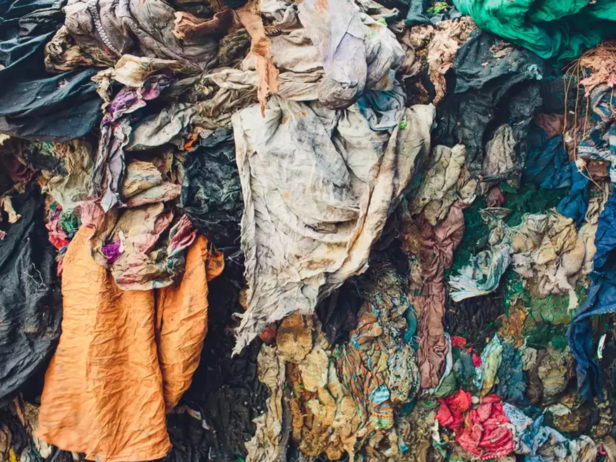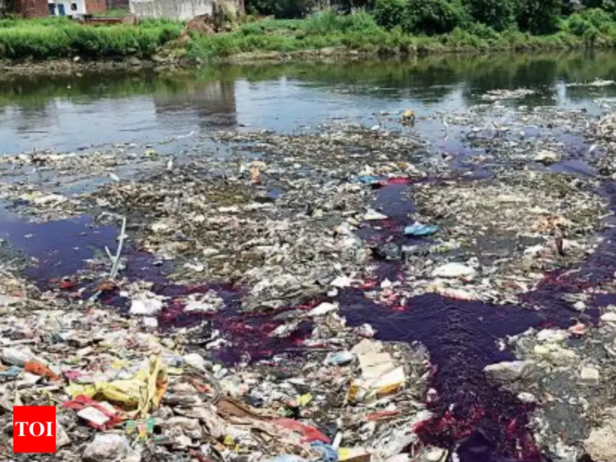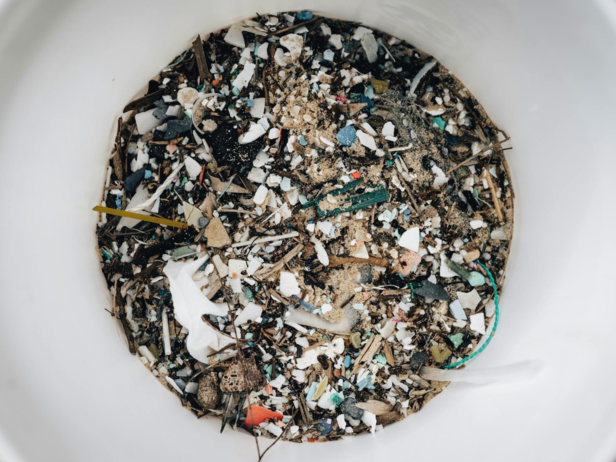How Fast Fashion Is Destroying the Earth
Gurjeet Kaur | Apr 13, 2025, 01:46 IST
Clothing Waste
( Image credit : Times Life Bureau )
Fast fashion’s trendy allure hides a dark truth: it’s trashing our planet! From toxic dyes polluting rivers to mountains of discarded clothes choking landfills, the environmental cost is staggering. Dive into the shocking impact of your wardrobe and uncover simple ways to fight back. Embrace sustainable style and help save Earth—one outfit at a time!
Walk into any mall, and you’ll see racks of trendy clothes at unbeatable prices. Fast fashion brands like Zara, H&M, Shein, and Forever 21 make it easy to fill your closet with the latest styles without breaking the bank. But behind the bright displays and low price tags lies a grim reality. Fast fashion is wreaking havoc on the planet, exploiting workers, and creating a mountain of waste that’s choking our Earth. This article uncovers the true cost of fast fashion, its devastating impact on the environment and humanity, and what we can do to stop it. It’s time to rethink the clothes we wear—before it’s too late.

Fast fashion is the business of making cheap, trendy clothes at breakneck speed. These brands copy runway designs and churn out new collections weekly, encouraging us to buy more and toss old clothes faster. Unlike traditional fashion, which focused on quality and durability, fast fashion prioritizes low costs and constant turnover. A $10 dress might feel like a steal, but it’s designed to fall apart after a few wears, keeping you hooked on the cycle of buying and discarding. This model isn’t just bad for your wallet—it’s disastrous for the planet and the people making these clothes.

Fast fashion is one of the world’s most polluting industries, leaving a trail of destruction across ecosystems. Here’s how it’s hurting the Earth:
Producing clothes demands massive amounts of water. A single cotton T-shirt takes about 700 gallons of water to make, while a pair of jeans can require up to 2,000 gallons. In countries like India and Pakistan, where water is already scarce, this puts immense pressure on local communities. Worse, dyeing fabrics releases toxic chemicals into rivers and lakes. In places like Bangladesh, rivers once teeming with life are now black with dye runoff, poisoning fish and making water undrinkable for nearby villages.
The fast fashion industry is a major driver of climate change. From growing cotton to manufacturing synthetic fabrics like polyester, every step burns fossil fuels. Shipping clothes from factories in Asia to stores worldwide adds even more emissions. Polyester, found in 60% of fast fashion garments, is made from petroleum, releasing carbon dioxide and methane during production. The industry produces about 10% of global carbon emissions—more than all international flights and maritime shipping combined. Every cheap dress or jacket contributes to a warming planet.
Fast fashion fuels a throwaway culture. Clothes are worn a few times before being discarded, either because they’re out of style or falling apart. Globally, we throw away 92 million tons of textiles every year—enough to fill a football stadium daily. Most of these clothes end up in landfills, especially in developing countries like Ghana, where second-hand clothing markets are overwhelmed with Western castoffs. Synthetic fabrics like nylon and polyester take 200–500 years to break down, leaching microplastics into soil and water as they decay.
To grow cotton, forests are cleared, and soil is overworked, leading to deforestation and erosion. In Brazil, cotton farming has encroached on the Amazon, wiping out habitats for jaguars and other wildlife. Viscose, a fabric made from wood pulp, is linked to the destruction of ancient forests in Indonesia. These practices not only kill biodiversity but also weaken the Earth’s ability to absorb carbon, making climate change worse.

Synthetic fabrics like polyester, acrylic, and nylon dominate fast fashion. Every time you wash these clothes, they shed tiny plastic particles called microplastics. A single load of laundry can release 700,000 microplastic fibers into waterways. These particles end up in rivers, oceans, and even tap water. Fish and other marine animals eat them, mistaking them for food, which harms their health and enters the food chain. Scientists estimate that 35% of ocean microplastics come from synthetic textiles, making fast fashion a leading cause of this growing problem.

Fast fashion doesn’t just harm the planet and people—it messes with our minds. Social media, influencers, and ads push the idea that we need new clothes to feel confident or relevant. Trends change so fast that last month’s outfit feels outdated today. This creates a cycle of overconsumption, where we buy clothes we don’t need and toss perfectly good ones. It’s not just wasteful—it’s stressful, tying our self-worth to what we wear. Fast fashion thrives on this insecurity, keeping us trapped in a loop of wanting more.

The numbers tell a grim story. In 2019 report come out that fast fashion consumes 98 million tons of oil annually to produce synthetic fibers. It generates 1.2 billion tons of CO2 emissions each year. Textile waste is growing sharply annually, with no end in sight. Rivers are dying, forests are disappearing, and workers are suffering. If we don’t change, the industry could account huge percentage of global carbon emissions by 2050, pushing climate change to catastrophic levels. The Earth can’t sustain this level of destruction.
The good news? We have the power to fight back. Here are practical ways to reduce fast fashion’s impact:
Instead of grabbing five cheap shirts, invest in one high-quality piece that lasts. Look for sustainable materials like organic cotton, hemp, or linen. Thrift stores, vintage shops, and platforms like Depop or Poshmark are great for finding unique, pre-loved clothes that don’t fuel new production.
Wash clothes in cold water and air-dry them to reduce microplastic shedding and energy use. Learn basic sewing to fix tears or holes. Treating your wardrobe with care means fewer replacements and less waste.
Share what you learn about fast fashion’s dangers. Post about it, talk to friends, or watch documentaries like The True Cost together. The more people know, the more pressure brands face to reform. Support policies that regulate textile waste and worker conditions.
Challenge the urge to buy every trend. Focus on building a timeless wardrobe that reflects your style, not social media’s. Happiness doesn’t come from a new outfit—it comes from knowing you’re helping the planet.
Fast fashion’s cheap thrills come at a devastating cost. It’s polluting our water, warming our planet, exploiting workers, and burying us in waste. But we’re not powerless. By buying less, choosing better, and spreading awareness, we can break this destructive cycle. The clothes we wear shouldn’t destroy the Earth we love. Let’s make choices that protect our planet and its people—starting today. The future depends on it.
Explore the latest trends and tips in Health & Fitness, Travel, Life Hacks, Fashion & Beauty, and Relationships at Times Life!
What Is Fast Fashion?

textile waste
( Image credit : Times Life Bureau )
Fast fashion is the business of making cheap, trendy clothes at breakneck speed. These brands copy runway designs and churn out new collections weekly, encouraging us to buy more and toss old clothes faster. Unlike traditional fashion, which focused on quality and durability, fast fashion prioritizes low costs and constant turnover. A $10 dress might feel like a steal, but it’s designed to fall apart after a few wears, keeping you hooked on the cycle of buying and discarding. This model isn’t just bad for your wallet—it’s disastrous for the planet and the people making these clothes.
Environmental Disaster of Fast Fashion

dye polluting river
( Image credit : Times Life Bureau )
Fast fashion is one of the world’s most polluting industries, leaving a trail of destruction across ecosystems. Here’s how it’s hurting the Earth:
1. Water Waste and Pollution
2. Skyrocketing Carbon Emissions
3. A Tidal Wave of Waste
4. Deforestation and Soil Destruction
The Microplastic Crisis

Microplastic
( Image credit : Pexels )
Synthetic fabrics like polyester, acrylic, and nylon dominate fast fashion. Every time you wash these clothes, they shed tiny plastic particles called microplastics. A single load of laundry can release 700,000 microplastic fibers into waterways. These particles end up in rivers, oceans, and even tap water. Fish and other marine animals eat them, mistaking them for food, which harms their health and enters the food chain. Scientists estimate that 35% of ocean microplastics come from synthetic textiles, making fast fashion a leading cause of this growing problem.
The Psychological Hook

social media and fashion
( Image credit : Freepik )
Fast fashion doesn’t just harm the planet and people—it messes with our minds. Social media, influencers, and ads push the idea that we need new clothes to feel confident or relevant. Trends change so fast that last month’s outfit feels outdated today. This creates a cycle of overconsumption, where we buy clothes we don’t need and toss perfectly good ones. It’s not just wasteful—it’s stressful, tying our self-worth to what we wear. Fast fashion thrives on this insecurity, keeping us trapped in a loop of wanting more.
How Fast Fashion Is Destroying the Earth

Fast Fashion Danger
( Image credit : Freepik )
The numbers tell a grim story. In 2019 report come out that fast fashion consumes 98 million tons of oil annually to produce synthetic fibers. It generates 1.2 billion tons of CO2 emissions each year. Textile waste is growing sharply annually, with no end in sight. Rivers are dying, forests are disappearing, and workers are suffering. If we don’t change, the industry could account huge percentage of global carbon emissions by 2050, pushing climate change to catastrophic levels. The Earth can’t sustain this level of destruction.
Breaking the Cycle: What You Can Do
1. Buy Less, Choose Quality
2. Take Care of Your Clothes
3. Educate and Advocate
4. Rethink Your Mindset
Fast fashion’s cheap thrills come at a devastating cost. It’s polluting our water, warming our planet, exploiting workers, and burying us in waste. But we’re not powerless. By buying less, choosing better, and spreading awareness, we can break this destructive cycle. The clothes we wear shouldn’t destroy the Earth we love. Let’s make choices that protect our planet and its people—starting today. The future depends on it.
Explore the latest trends and tips in Health & Fitness, Travel, Life Hacks, Fashion & Beauty, and Relationships at Times Life!
